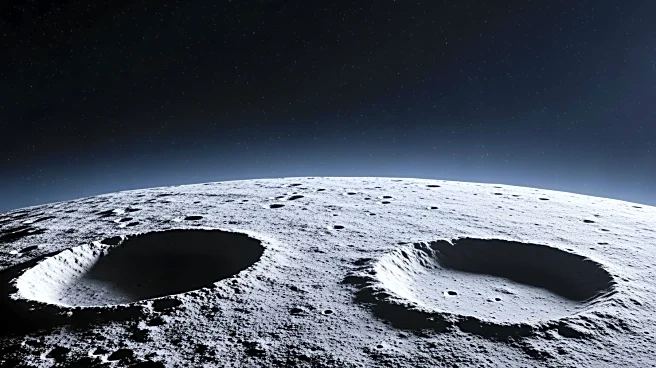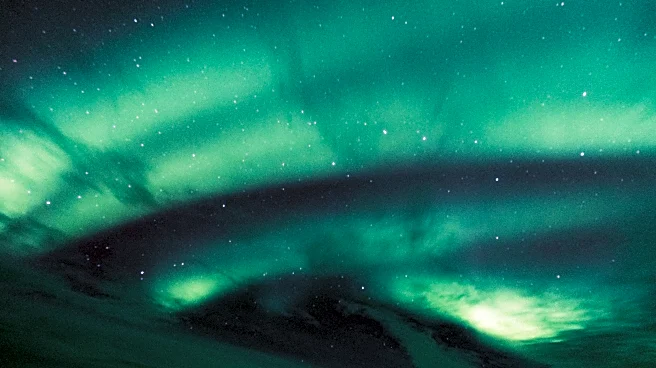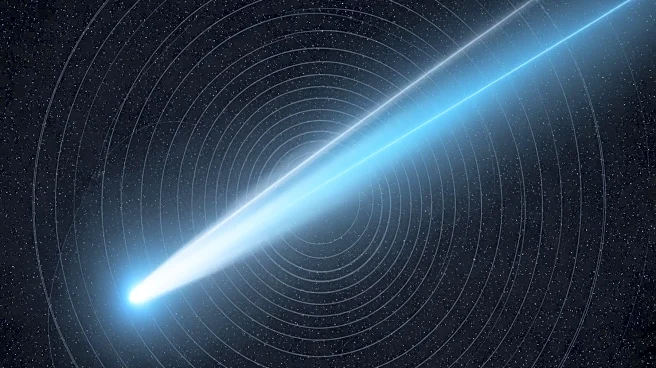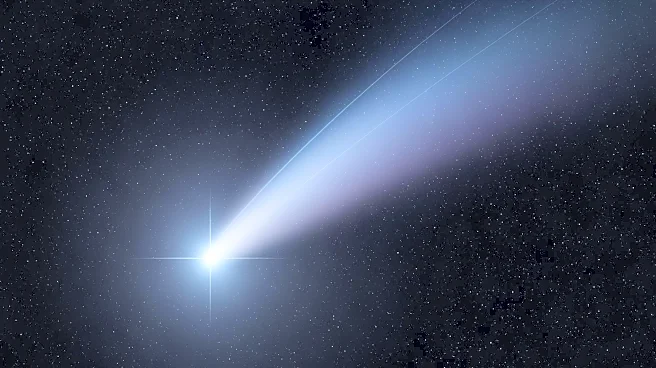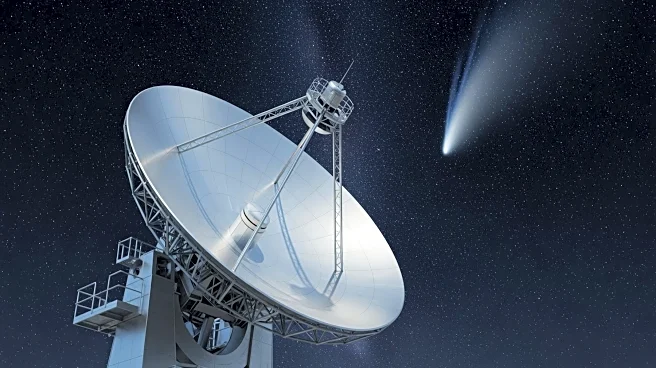What's Happening?
On November 12, the waning crescent Moon will be visible rising between Regulus and Denebola in the constellation Leo. The Moon's western limb will display the Copernicus crater, characterized by a brighter eastern rim and muted ejecta rays. Southeast
of Copernicus, the smaller Kepler crater will be discernible, with its rays overlapping those of Copernicus. A lunar occultation of Rho Leonis is projected for specific locations in northern Canada and Alaska. The event offers a unique opportunity for astronomers and enthusiasts to observe these lunar features and celestial alignments.
Why It's Important?
Observing the Moon's craters provides valuable insights into lunar geology and the history of impacts on its surface. The visibility of Copernicus and Kepler craters allows astronomers to study their structure and composition. The lunar occultation of Rho Leonis offers a rare astronomical event that can enhance understanding of celestial mechanics and the Moon's interaction with other celestial bodies. Such observations contribute to the broader field of astronomy and inspire public interest in space exploration.
What's Next?
Astronomers and enthusiasts are encouraged to observe the Moon and its craters during this event. The International Occultation Timing Association provides details for those in northern Canada and Alaska to witness the occultation. Future lunar observations will continue to explore the Moon's surface features and their implications for lunar science. The event may inspire further research and public engagement in astronomy.
